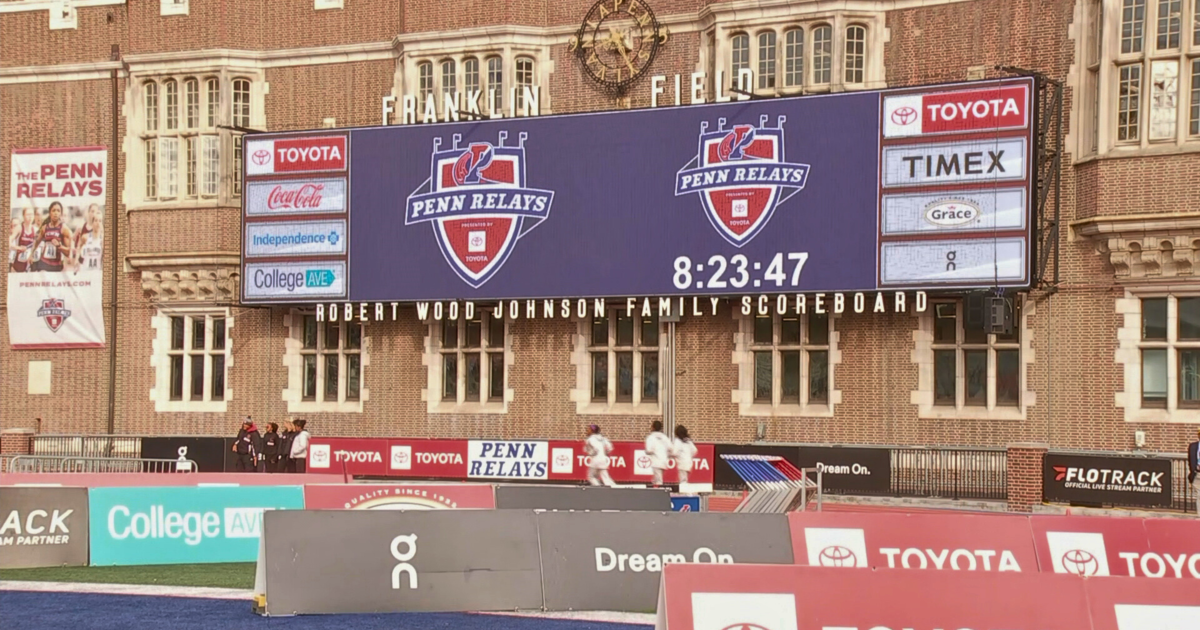Coronavirus Pennsylvania: Gov. Wolf Easing Restrictions In 24 Counties As Cases Nearing 49,000, Death Toll Tops 2,500
PHILADELPHIA (CBS/AP) -- About 1.5 million Pennsylvania residents will be able to freely leave their homes next week, and retail shops and other businesses will be able to reopen, as Gov. Tom Wolf on Friday lifted some pandemic restrictions on 24 largely rural counties. However, Philadelphia's five-county region is not yet allowed to reopen.
Coronavirus Latest: What You Need To Know And Staying Connected
This comes as the number of COVID-19 cases in Pennsylvania is nearing 49,000 as the death toll has topped 2,500.
All of the counties moving from "red" to "yellow" in Wolf's color-coded reopening plan are in the northwest and north-central regions of Pennsylvania, which have seen far fewer coronavirus infections and deaths than most of the rest of the state. The most heavily populated areas, including Philadelphia and Pittsburgh, will remain locked down, Wolf said.
"Pennsylvanians living in a county that is entering a yellow phase should continue to do things such as social distancing," Wolf said.
The changes are to take effect next Friday, May 8. Stay-at-home orders will be lifted, gatherings of up to 25 people will be allowed, and retail shops can start to reopen, though gyms, barbershops, nail salons, casinos, theaters and other such venues will remain closed and other restrictions will remain in place.
"Every Pennsylvanian should feel proud of the work we all did to flatten this curve, and every Pennsylvanian should take this moment to feel motivated by the success that we have had," said Wolf, who nevertheless urged vigilance by residents and businesses to prevent an outbreak that could lead him to issue new shutdown orders in the areas where they're being lifted.
"They must continue to abide by the underlying message of yellow: Proceed with caution," Wolf said at a video news conference.
The counties where pandemic restrictions will be eased are: Bradford, Cameron, Centre, Clarion, Clearfield, Clinton, Crawford, Elk, Erie, Forest, Jefferson, Lawrence, Lycoming, McKean, Mercer, Montour, Northumberland, Potter, Snyder, Sullivan, Tioga, Union, Venango and Warren.
State health officials say the 24 counties chosen had the lowest per capita case counts. They also have the ability to perform contact tracing.
Counties in the Pittsburgh area and some in south-central Pennsylvania could be next to see an easing of restrictions, Wolf said, though he did not offer a timetable.
But what about the Philadelphia region? Are we talking weeks or months of remaining in the red phase? Wolf says it depends on how well we stay away from each other.
His administration also revealed details Friday about its strategy for mass testing — establishing a goal that 250,000 people are tested each month, up from about 180,000 currently — and released a contact tracing plan to contain fresh outbreaks, though health officials did not say how many tracers will be required to cover a state with 12.8 million people. Contact tracers identify people whom COVID-19 patients have been in contact with so they can be tested and isolated.
Smartphone users will be able to enroll in a voluntary program that will use Bluetooth technology to determine who may have come into contact with someone infected with the virus. It will send an alert to that smartphone if it was within a certain range of the infected user's phone for a certain period of time, according to the Health Department. Officials did not say when the program will be deployed.
Wolf has said that shutdown measures he ordered starting in March have succeeded in preventing hospitals from becoming overwhelmed with patients with COVID-19, the disease caused by the virus. New infections have been trending down in many counties.
An analysis by The Associated Press shows that only 27 of the state's 67 counties reported too many new virus cases over the past two weeks to qualify for a gradual easing of restrictions under Wolf's reopening plan. But Wolf has grouped the state's counties into six geographic regions, and health officials are also looking at regional case counts as they decide which counties merit consideration.
Health officials also say the incidence of new cases isn't the only metric they're looking at. Expanded virus testing, sufficient hospital capacity and the ability to quickly identify and contain flare-ups through contact tracing must also be in place.
The coronavirus has infected 47,000 Pennsylvania residents and killed more than 2,300, according to the latest Health Department statistics, while the state's efforts to contain the virus have caused economic devastation, throwing nearly 1.7 million Pennsylvania residents out of work since mid-March.
Schools statewide remain closed for the rest of the academic year, and visitation restrictions on prisons and nursing homes remain in place. Wolf's administration will continue to recommend that people wear masks in public, and mandate that businesses and commercial buildings that serve the public deny entry to customers not wearing them.
Meanwhile, Wolf has begun loosening some restrictions on business sectors. On Friday, golf courses, marinas, guided fishing trips and privately owned campgrounds statewide were permitted to reopen, and construction work was permitted to resume.
CBS3's Natasha Brown and Alexandria Hoff contributed to this report.
(© Copyright 2020 CBS Broadcasting Inc. All Rights Reserved. The Associated Press contributed to this report.)




